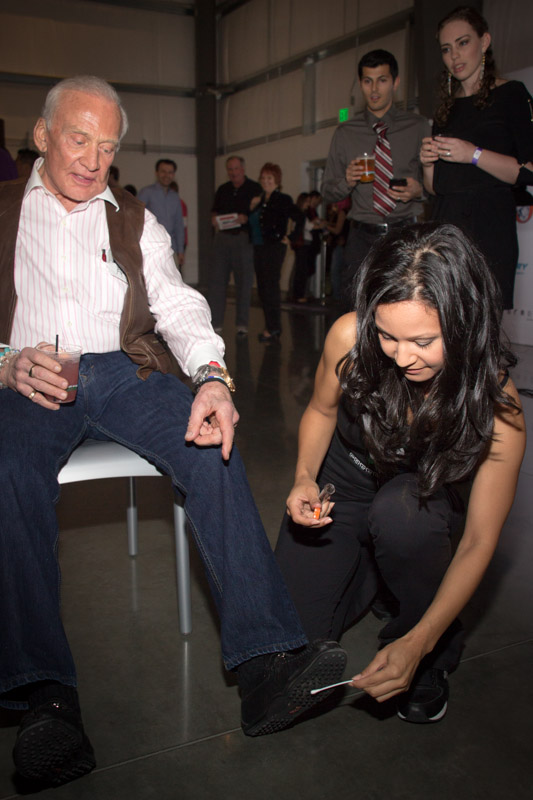
Science Cheerleader Taylor collecting microbe samples from Buzz Aldrin’s shoes at Yuri’s Night in Los Angeles.
UC Davis wrote a press release to announce the recent publication of a scientific paper in PeerJ by the Project MERCCURI team.
In 2013 and 2014, David Coil, with Russell Neches and Professor Jonathan Eisen of the UC Davis Genome Center, as well as UC Davis graduate student/professional cheerleader Wendy Brown and Darlene Cavalier of Science Cheerleaders Inc. launched an effort to sample microbes from spectators at sporting events across the country as part of Project MERCCURI. Volunteers swabbed cellphones and shoes from almost 3,500 people and sent the samples to the Argonne National Laboratory, University of Chicago, for processing.
They found that shoes and cellphones from the same person consistently had distinct communities of microbes. Cellphone microbes reflected those found on people, while shoes carried microbes characteristic of soil. This is consistent with earlier results.
The shoe microbes were also more diverse than those found on a person’s phone.
Although samples were collected at events across the country, the researchers did not find any conclusive regional trends. In some cases, there were big differences between samples collected at different events in the same city. In others, samples from distant cities looked quite similar.
Microbial Dark Matter
Surprisingly, a substantial proportion of the bacteria came from groups that researchers call “microbial dark matter.” These microbes are difficult to grow and study in a lab setting and thus have been compared to invisible “dark matter” that astronomers think makes up much of the universe.

